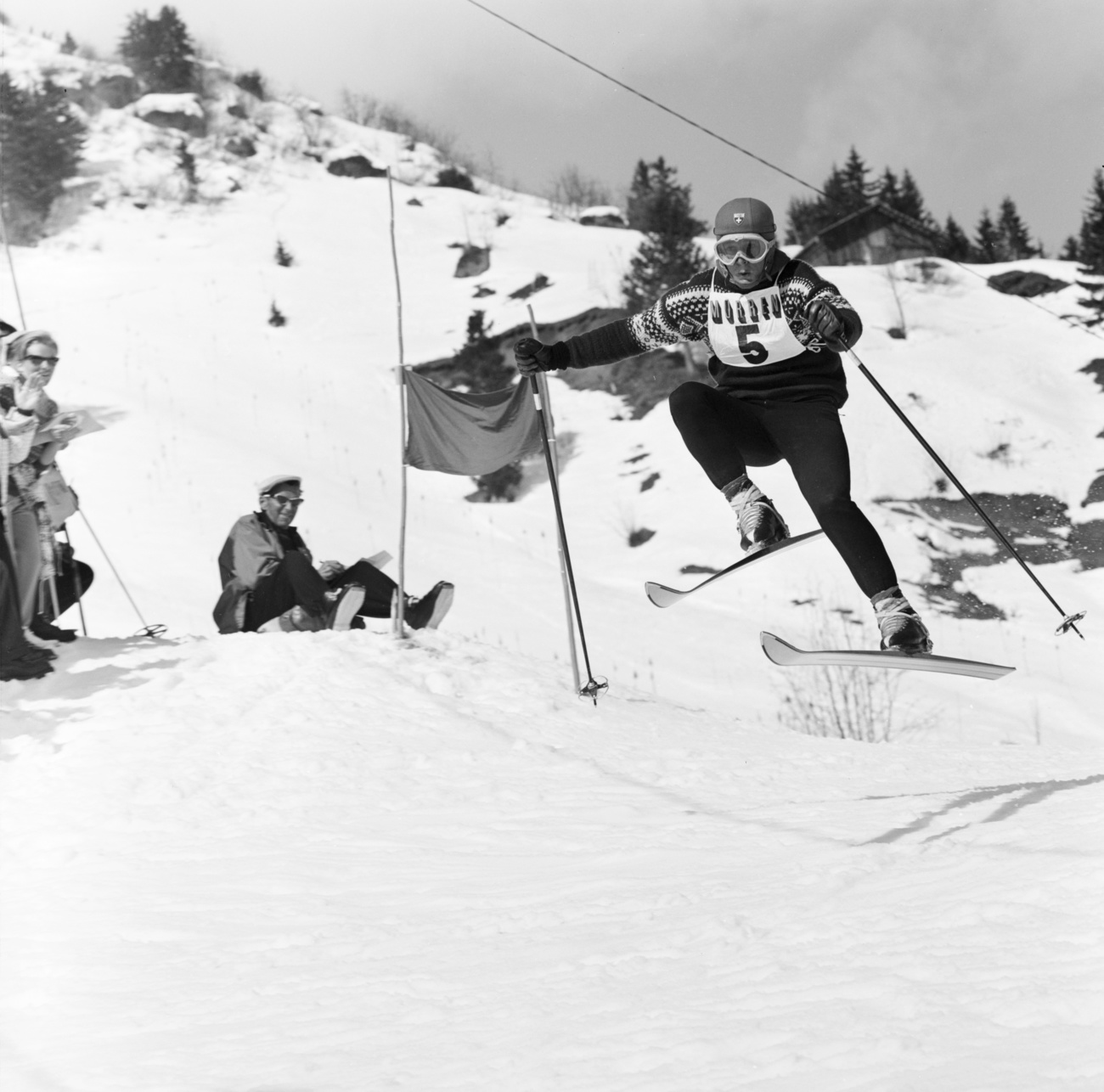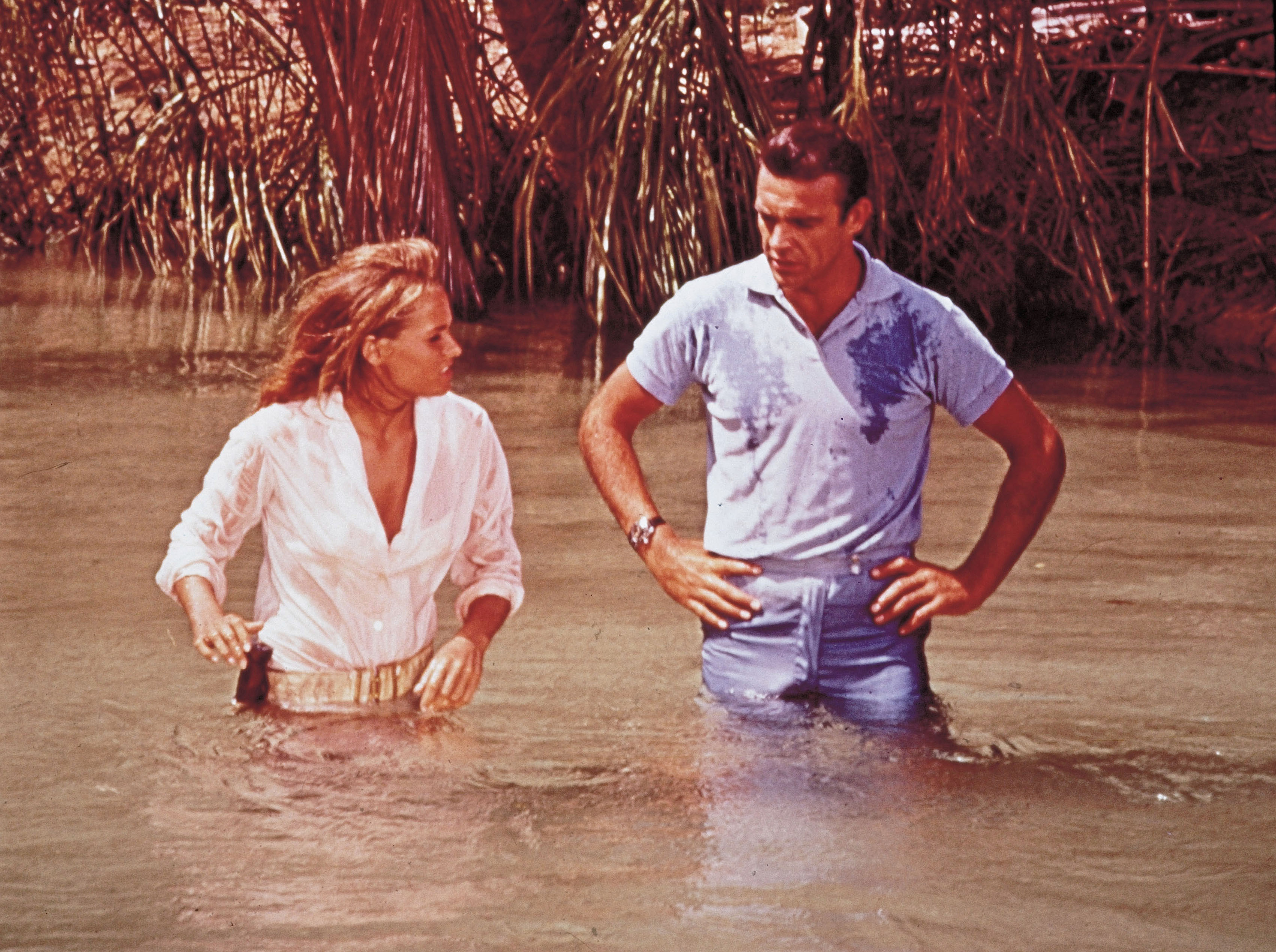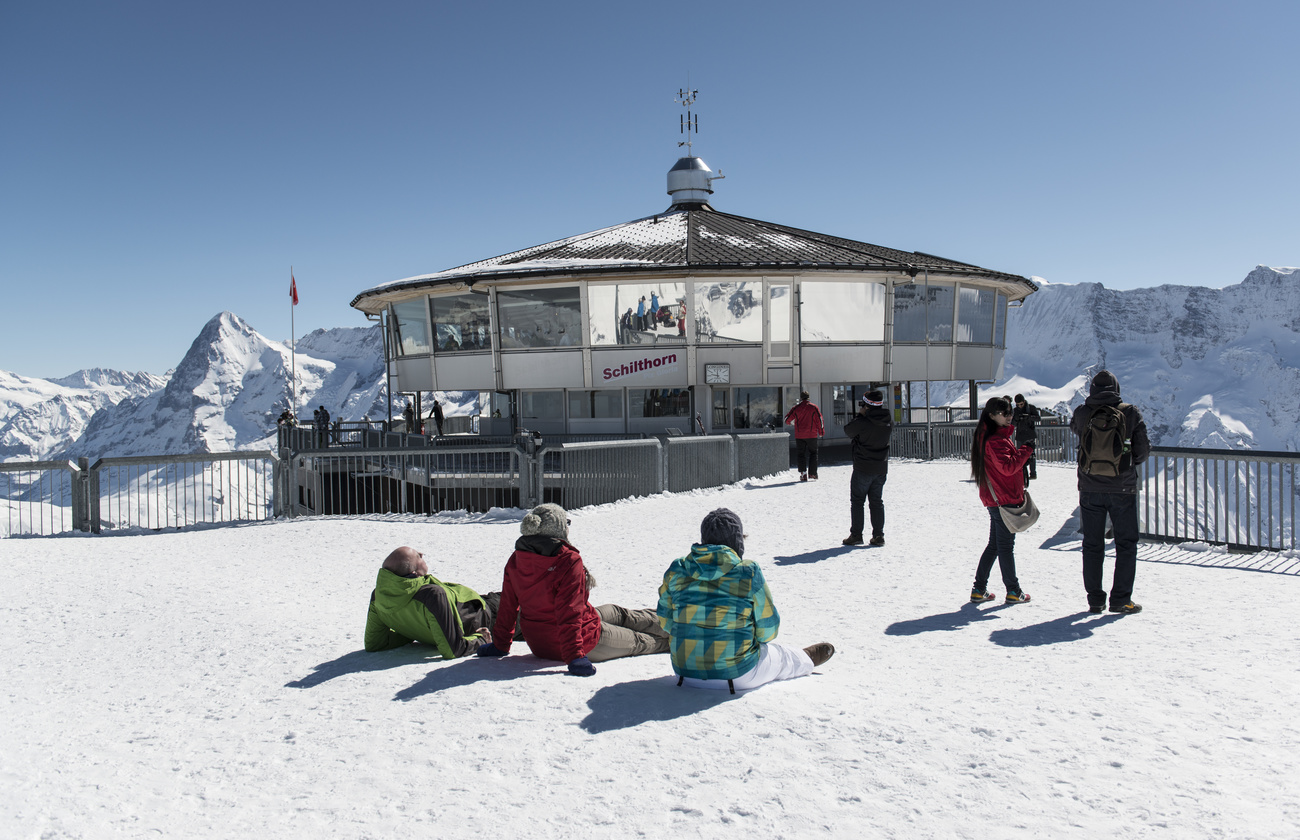
James Bond’s ski club celebrates 100 years of racing – and partying

In the usually sleepy Swiss village of Mürren, the pioneering Kandahar Club is gearing up for its centenary.
“I’ve got about five Bond girls’ numbers in my phone,” says Alan Ramsay, as we glide up the mountain in the gloom of pre-dawn. “But they’re all over 70.” Despite the early hour, the Scottish-born honorary Mürrenian is already on form. He’s not wearing his kilt – an outfit he’s been known to sport when skiing the Inferno, billed as the world’s craziest amateur ski race, of which more later. Today, he’s settled for the understated elegance of bright-red tartan ski trousers.

We’re heading up to the summit of the Schilthorn, and the revolving restaurant immortalised in On Her Majesty’s Secret Service. Back in the late 1960s Mürren desperately needed financing to get the final, most ambitious leg of its wildly over-budget cable car project finished, while the Bond producers needed a mountaintop lair from which Telly Savalas’s Blofeld could stroke his white Persian and fine-tune his diabolical plans. It was a tie-up that forged enduring links between cast and location, with multiple official reunions since. Hence Ramsay’s notable contacts list.

More
James Bond: half-Swiss, totally profitable
I’m as Bond-fixated as the next middle-aged man, but that’s not why I’m here. I’ve come to delve into the origins of an exclusive ski club established in this intimate Bernese Oberland ski resort a century ago this month, one with a reputation so dashing that Bond creator Ian Fleming couldn’t help but make his most famous creation a member.
The cable car bumps to a stop and, skis hoisted on shoulders, we step out into Piz Gloria. Back in the winter of 1969, this svelte, conical retreat was awash with Bond girls, Joanna Lumley and Diana Rigg among them, draped over mountain-chic furnishings segmented by gold-hooped partitions. The latter, pleasingly, are still there; the rest has been transformed into a restaurant that, once every 45 minutes, completes a full rotation of what may be the Alps’ most compelling panorama.

To the east, the sun is creeping up behind the Eiger, Mönch and Jungfrau, bestowing on the neatly aligned trinity of peaks a messianic glow. To the north, yet to emerge from beneath its snug duvet of morning mist, Lake Thun, with the Swiss Plateau and Germany’s Black Forest beyond. Ramsay points out Mont Blanc to the south-west, through the saddle of two of the more than 200 Alpine peaks visible from this 2,970m perch. Far below, hidden by a ridge of rock, is the cliff-edge eyrie of Mürren, itself a sheer 800m above the Lauterbrunnen valley floor.
It was among these implausible contours that, a century ago, tweed-suited Brits sought to revolutionise competitive skiing. Their driving force was Arnold Lunn, a charismatic mountaineer who had the look of a kindly Edwardian headmaster and the wild-eyed adrenalin lust of a base jumper.
Lunn, whose father Henry popularised winter holidays in the Alps at the turn of the last century and created the company that would eventually become British travel agency Lunn Poly, had no time for the Nordic pursuits of langlauf (cross-country) and ski jumping. Nor the Scandinavians’ early incarnation of slalom, which prioritised style over speed.

Hurtling down slopes was his thing – a distraction, perhaps, from the unremitting pain of a climbing accident that left one leg two inches shorter than the other. He fought a protracted battle for slalom and downhill, as we know them today, to be adopted as Olympic sports (something he’d ultimately achieve in 1936). To promote the embryonic disciplines, and to fast-track Brits to the requisite standard, on January 30, 1924, in Room 4 of Mürren’s Palace hotel, he formed the Kandahar Ski Club.
“A fast, ugly turn is better than a slow pretty turn,” was Lunn’s dictum. And it’s in that spirit that Ramsay and I set off down the slopes. The black run from the top of the Schilthorn is one of the Alps’ most totemic: a heart-stoppingly steep plunge that spirals anticlockwise, then corkscrews back round into an enormous, curvaceous bowl christened “Happy Valley” by Lunn and his pioneering friends.
It proves a euphoric start to a rousing day exploring Mürren’s 52km of varied pistes: broad, invigorating reds, overhung by muscular escarpments; serene blues, winding through forest so dense it seems to thrum with stillness. Ramsay, who came for a ski season in 1990 and never left (he now works as a sales manager for the Schilthornbahn), guides me to the Schiltgrathüsi, a tiny mountain restaurant hunkering beneath a thick mattress of snow. From its suntrap terrace we watch paragliders carefully unfurl their wings and scuttle their way skywards, their slender silhouettes quickly lost against the craggy immensity of the Jungfrau.
For all the ski-racing associations, the cadence of life in Mürren is resolutely slow. From the top of the Allmendhubel funicular – built in 1912 primarily to serve the village’s bobsleigh run – it’s a leisurely, tree-lined descent to Mürren’s tidy cluster of cliff-edge buildings. At the little ski school, spry septuagenarians are urging on determined preschoolers in bulbous ski suits. Delighted shrieks emanate from the gleaming sheen of the ice rink. Thick-boarded chalets sag characterfully, shaped by the passage of time.

Save for the cranes working on the upgrades to the Schilthornbahn, which by the end of 2026 will cut the journey from valley to peak from four to three stages, the scene isn’t markedly dissimilar to the one Lunn would have witnessed a century ago, striding around purposefully with his clipboards and little flags.
The Hotel Eiger, a larch-clad landmark on the northern fringe of the village, is something of a spiritual home for the Kandahar. I join other guests for sundowner mugs of glühwein on the terrace. A little fire wards off the chill.
Mingling with the crowd is Annelis Stähli, the former manager whose grandparents founded the hotel in 1892. The 86-year-old reminisces about the Bond winter when filming consumed the village. About Lunn, too (“a lovely man”) and his renowned absent-mindedness. “I remember he came down to dinner once in a dinner jacket and pyjama bottoms,” she says. “I had to tell him.”
Later in the week I ski with Christian Edalini, a teak-hued champion skier with an uncanny resemblance to Telly Savalas. For the 43rd time the 66-year-old Italian will be lining up for the Inferno later this month. The race was inaugurated four years after the Kandahar by a group of 17 club members, who hiked to the top of the Schilthorn over two days and skied back down. Today it claims to be the largest amateur race in skiing, with 1,850 competitors let off over 12-second intervals to ski a course that plummets 2,170m over 14.9km to Lauterbrunnen.

A long-term Kandahar member and ski school instructor, Edalini has coached “hundreds” of members to tackle the race. “I always tell them, ‘when you can beat me, you can ski!’” Over lunch at the Schilthornhütte, high on the ridge at the mouth of Happy Valley, I ask him about the Kandahar. A century on, the club certainly seems in rude health, with an active membership of around 1,650.
He likens it to a big family. But not everyone is as enthusiastic. Any organisation branded “the poshest ski club in the world” by British lifestyle magazine Tatler, with foundations rooted partly in Henry Lunn’s not entirely inclusive Public Schools Alpine Sports Club, is going to come in for some stick. But claims that this is a drinking club with a skiing problem, a sort of Bullingdon Club with salopettes, just don’t stack up.
For one, dues are a modest £55 (CHF60) per year and membership is diversifying: 15% non-Brits currently, about a third women. And while Inferno week certainly sees a Category 4 hedonistic blizzard rip through the village, locals seem adamant it remains the right side of debauched. “We know not to go out to the restaurants during Inferno week. It’s crazy,” one shopkeeper tells me. “Good crazy?” Broad smile: “Good crazy.”

On my final evening, I meet Bernie Lunn, Arnold’s grandson, a retired tech entrepreneur who lives in the village. Wearing a flat cap that might have been de rigueur in these parts a century ago, the amiable 69-year-old offers to show me the Kandahar clubhouse. It is, as with everywhere in Mürren, a short walk away, just past the curling rink at the rear of the sports centre.
Inside is a huge glass-fronted cupboard laden with silverware. A set of Lunn’s wooden skis and poles are suspended on the wall. From a small black-and-white portrait stares Lord Roberts of Kandahar, the ski-mad, walrus-moustached general whose sobriquet – adopted from a victorious campaign in Afghanistan – was commandeered by the club.
From the shelves I take down the very first Kandahar Ski Club Review, bound in blue leather. The pages fizz with outmoded vernacular. “Ski racers” exhibit “pluck” and “dash”. The casually eviscerating race reports are a delight. “In unimportant fixtures Barratt, the captain of the club team, always does well, but loses his nerve for big events.” Barratt, poor chap, duly went on to fall multiple times “for no apparent reason”.

Among the list of the 56 original members, there’s a single italicised name. Andrew Irvine, known as Sandy, who less than a month after joining the club set sail for the Himalayas and was last seen just after midday on June 8, 1924, pushing for the summit of Everest alongside George Mallory. “Irvine, A. C. (killed on Everest)” reads the entry. His body was never found.
The review extends the club’s heartfelt sympathies to the 22-year-old’s parents. They may have found some consolation in Bernie’s favourite passage from his grandfather’s prolific writing, one that speaks of Lunn’s quasi-religious attachment to the exhilarating contours of this corner of Switzerland: “Only those who have climbed through the night can truly understand the benediction of the dawn.”
Britain’s greatest skier, Dave Ryding, is certainly not short of pluck or dash. A long-term Kandahar member, he’s enduringly grateful for the financial support that helped him bridge the chasm between learning to ski on dry slopes in Lancashire’s Ribble Valley and competing with, and occasionally beating, the best Alpine skiers.
When he won the prestigious slalom in Kitzbühel, Austria, in 2022 – a first for a British skier in World Cup history – it was a century and a day after Lunn staged the first modern slalom in Mürren. Does the four-time Olympian feel an affinity with Lunn? A gratitude, even? “Definitely. Being with the Kandahar you’re always reminded of him,” he says. “The whole sport has grown from his passion.”
It patently irks Ryding that he’s never had a chance to enjoy the full Inferno experience. It usually clashes with a race weekend, and as a pro he’s barred anyway. But he fully intends to remedy that on retirement and, as someone who in the Kandahar tradition doesn’t take himself overly seriously – “37-year-old bald disco dancer” reads his Instagram profile – he’d be a welcome addition to both sides of the finish line, one senses.
“They’re as passionate about ski racing as I am, that lot,” says Ryding. “They understand it’s like a drug: the sense of freedom, charging down the mountain. You’ve got to enjoy yourself after that.”
Copyright The Financial Times Limited 2024

In compliance with the JTI standards
More: SWI swissinfo.ch certified by the Journalism Trust Initiative































You can find an overview of ongoing debates with our journalists here . Please join us!
If you want to start a conversation about a topic raised in this article or want to report factual errors, email us at english@swissinfo.ch.